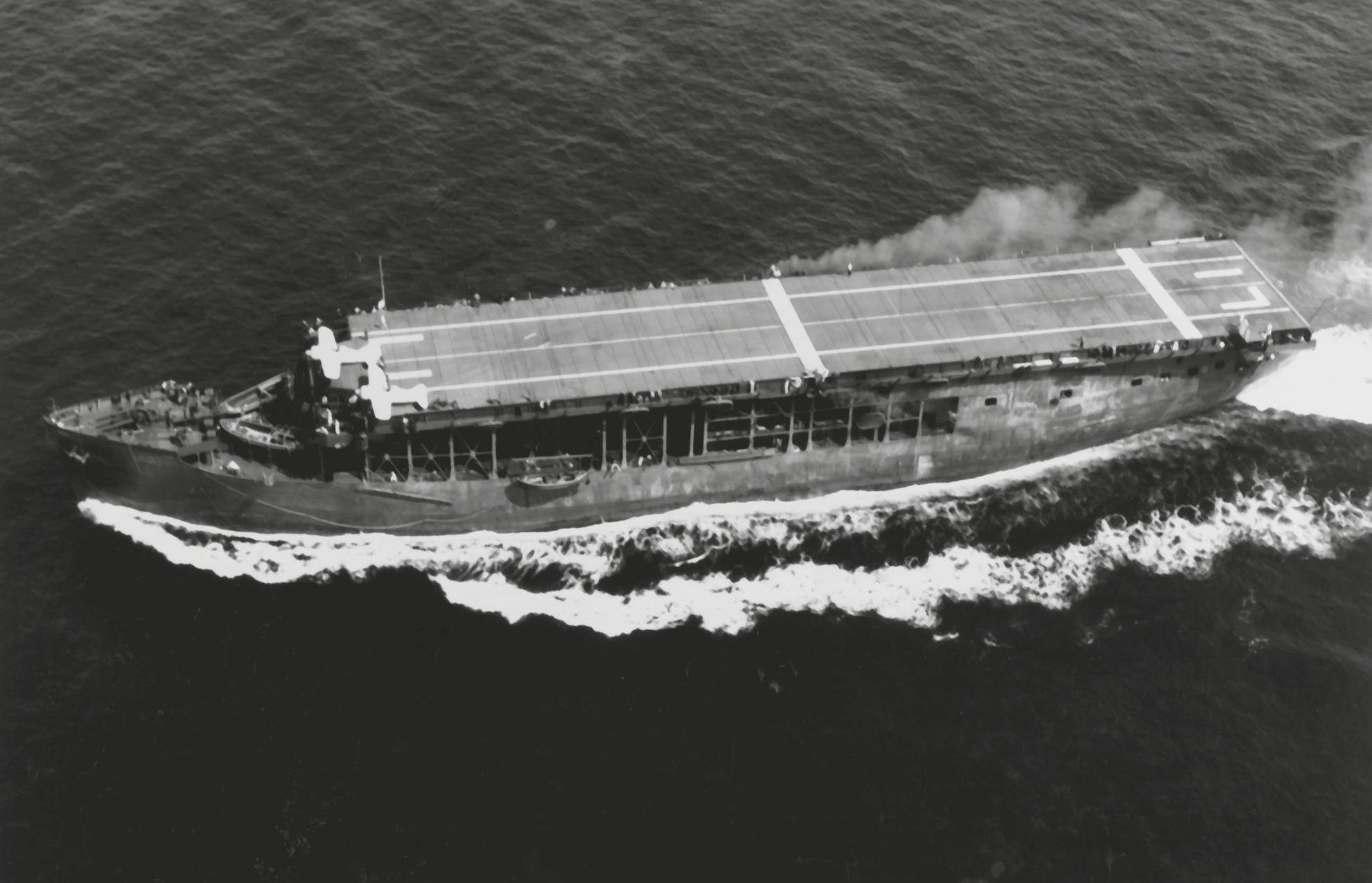THE RISE OF THE ESCORT CARRIER
The USN had explored the concept of a small aircraft carrier ever since the period immediately following the Washington Naval Treaty in 1922. There was serious consideration given to building a hybrid cruiser-carrier known as a “flying deck cruiser.” This concept never came to fruition, as traditional carriers and cruisers were judged to be more valuable. However, another concept proved to be more prescient. This called for the conversion of ten passenger ships into carriers in time of war. Passenger liners were best suited for this conversion since they could usually reach high speeds and were larger than regular merchant ships. When conflict came, the USN did not use passenger liners as the basis for complex carrier conversions, but did use regular merchant hulls as the basis to quickly and cheaply build what became known as escort carriers.
The impetus to convert merchant ships into small carriers was the war in Europe. The German U-boat threat to trans-Atlantic convoys was apparent, and a small carrier dedicated to convoy escort seemed a worthy investment. However, the USN was resistant to the notion of building and employing conversions of patently inferior small carriers with a limited aircraft capacity and little or no protection from attack.
The driving force behind the idea of what would become escort carriers was none other than US President Franklin D. Roosevelt. He had been Assistant Secretary of the Navy in World War I and saw himself as an insightful observer of the USN and its needs. In late October 1940, he directed the Chief of Naval Operations to acquire a merchant ship for conversion into an aircraft carrier. Roosevelt had an austere conversion in mind, which was in direct contradiction to what the Navy wanted. The ship to be converted had to be between 6,000 and 8,000 tons, have a top speed of not less than 15kts, and had to be able to carry between eight and 12 helicopters or aircraft. The carrier-to-be was viewed as an asset for convoy escort. It is noteworthy that Roosevelt also intervened in another carrier matter with the Navy by directing that nine Cleveland-class light cruisers be converted into light carriers against the wishes of the admirals. Both his escort carrier and light carrier directives resulted in the creation of important building blocks for the USN.
Pushed into action, the USN decided to obtain two C-3 type merchant ships for conversion. It was still obvious that the Navy did not fully understand Roosevelt’s concept when it stated it needed 18 months to convert the ships into carriers. Roosevelt gave them three months. A proposal on January 17, 1941 was accepted by Roosevelt and the first ship slated for conversion, Mormacmail, was selected and scheduled to be available on March 1. A second ship, Mormacland, was also set for conversion and subsequently assigned to the British Royal Navy (RN).

When first commissioned, Long Island had a short 362ft flight deck as is evident in this July 8, 1941 view. The carrier’s original air complement consisted of F2A fighters (two of which are parked at the forward end of the flight deck) and SOC-3A scout-observation aircraft. Note the flight deck markings on the bow and stern of “LI.” The ship is painted in Measure 1 camouflage, with heavy weathering evident on the hull. (Naval History and Heritage Command)
A note should be made on the changing designation of these small carriers, which reflected their growing acceptance by the USN. They were initially designated aircraft transports (APV), and then as general-purpose aircraft tenders (AVG) on March 31, 1941. In August 1942, this was changed again to auxiliary aircraft carrier (ACV). The final designation was approved in July 1943 – CVE (escort carrier). To many of their crewmen, this really stood for Combustible, Vulnerable and Expendable. The naming convention for these ships used bays, rivers, famous battles fought during the war, and in one instance (Block Island), the name of an escort carrier lost earlier in the war.